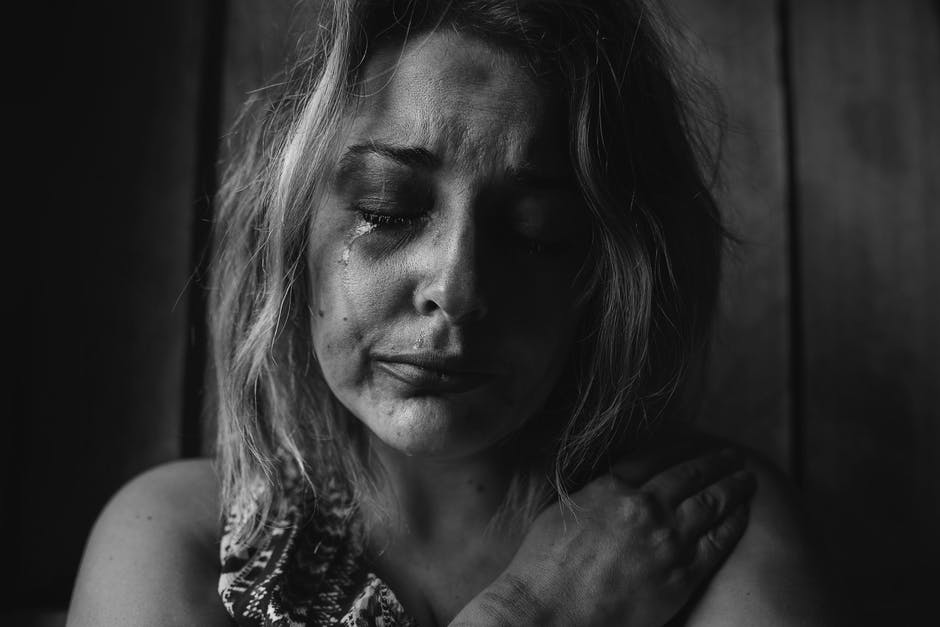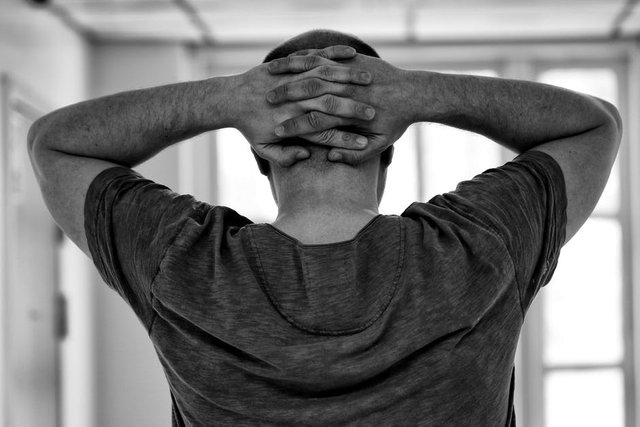Everything You Need To Know About Panic Disorder And Agoraphobia. #2

Image Source: Pexels
Welcome to another exciting series, on our last note we talk about panic disorder which is identified by periodic, unforeseen attacks of enormous fear; combine with anxiety consist of further attacks, we examine the symptoms and look at the meaning of agoraphobia. click here for the last series
To appreciate how frightening panic attacks can be, imagine being mugged by someone who puts a gun to your head. The intense, overwhelming fear that you are likely you experience in such a situation is comparable to a full-flow panic attack. Now imagine such fear gripping you for no perceptible reason in a variety of situations. Imagine worrying about what you might do if you were overwhelmed by such fear in a public situation. Would you lose control and run away screaming? Would you pass out? Would you say or do something terribly inappropriate? If you can imagine these situations vividly, you will have a good idea what it is like to encounter panic attack and why people go to great stretch to avoid situations in which they might occur.
Panic attacks are only one part of panic disorder. In addition to the attacks, there is a subordinate anxiety-the fear of having more attacks. This secondary anxiety is often the more critical problem. It is the steering force behind the avoidance of certain situations, known as agoraphobia, which is so common in panic disorder. This withdrawal reduces the anxiety and thus negatively reinforces the agoraphobia-that is, agoraphobia becomes more likely because it reduces the aversive state of intense anxiety. Some of these aspects of panic disorder are illustrated by the case of John.
Nature equipped organisms well for survival “fight or flight” reply provides a nearly instantaneous mobilization of the organism to help it survive this kind of life/death case.
A Considerate Balance Is Lost

Image Source: Pexels
Panic was nothing new to John. He had experienced regular panic attacks since early adolescence. With every attack, his heart would race and pound, he would physically shake, he would gasp for breath, and he would desperately want to run away. For 40 years he had dealt with it, although the fear never really left him. The panic attacks were more common in social settings, so he avoided these whenever possible. Nevertheless, having been married for 30 years, had brought up three children, and having worked at a local manufacturing firm since he left high school. Although a valued employee, he had turned down several promotions because the additional responsibilities would have included attending meetings that would have triggered panic attacks.
John maintained a delicate balance with the help of antianxiety medication, pushing himself hard enough to be able to work, but not so hard that the anxiety would overwhelm him. However, it all came apart one mild November day, when he had one of his worst panic attacks ever while at work. His body quiver so hard that even his co-workers thought he was dying. His co-workers took him to the nurse’s office immediately, where the nurse confirmed a heart rate over 150 beats a minute. She called emergency unit fearing that it will amount to having heart attack. Although it perceive like a panic attack to john, he had never experienced one this intense, so he did not hesitate to go to the hospital. After an ample series of tests over three days, John was cleared to return to work, but within an hour after returning, he had another massive panic attack. He left work immediately, calling the nurse’s office from home to explain what had happened. John’s anxiety was so severe that he was scared to leave his home and was unable to return to work.
The pattern of anxiety that John experiences is unalike from GAD. He worries that almost exclusively which bring about frequent panic attacks and losing control. His fear of having more attacks prevents him from leaving a normal life. He avoid circumstance in which he has had attacks before or from which he would be powerless to escape if he would get a panic attack.
There is cued & uncued panic attack. Cued panic attacks are responses to certain objects, whereas uncued panic attacks occur at unpredictable times. People describe uncued panic attacks as coming “out of d blue.” Cued panic attacks can occur with many anxiety disorders, whereas uncued panic attacks rarely happen outside of panic disorder, their unforeseeable makes uncued panic attacks more frightening.

Image Source: Pexels
Between 2 and 3 % of the population will qualify for detection of panic disorder sometime during their lifetimes, although the rates are slightly lower in Mexican Americans. Panic disorder is 2 - 3 times more usual in women than in men and it is found around the world.
In some cultures, panic attacks are experiences as magical events, sometimes thought to be the result of witchcraft, but in most Western cultures, the most common experience is tenderness towards one is dying or going crazy. In most occasions of panic disorders develop during past early life or advanced adulthood. Even without treatment, the panic may subside for a while, only to return later. However, panic disorder tends to be rather chronic without treatment.

Image Source: Wikimedia
There was no panic disorder diagnosis till the emergence of DSM-III. Of course, panic disorder existed before its official recognition in the diagnostic manual, but most mental health experts often misinterpreted it. The panic attacks, which are one of the explained features of panic disorder, were referred to as anxiety attacks. Although panic attacks feel like anxiety, they are really a different phenomenon. Panic and anxiety are generated in different province of the brain and serve different purposes. Panic is the ‘’fight or flight’’ response that construct the body for immediate action, while anxiety is the sagacity of perception that places the organism on alert and prompts advanced organisms such as humans to plan for potential problems that may occur later.
If the ‘’fight or flight’’ response of a panic attack is so valuable, why does it feel so terrible? Perhaps the major person is that a panic attack is a false alarm. There will be no endangerment so the attack feels alien, as though ones’ body or mind were out of control. This feeling of being out of control is a critical element in panic disorder. A smoke detector provides a good analogy. Smoke detectors sample the air and respond with a loud alarm if smoke is detected, but this is not a foolproof process. A smoke detector sometimes sounds a false alarm-going off when no fire. One way to lower false alarms is to reduce the reactivity of the detector, but for doing so increases the risk that the unit will fail to detect a real fire. The same is true of panic attacks. The human brain may be infinitely more complex than a smoke detector, but it serves a similar function with respect to danger-taking in information and deciding whether danger is present. Having the body dim to respond to a real danger is a much more serious problem than an occasional, unnecessary panic attack.

Image Source: Pixabay
The hypothetical situation that the brain faces in assessing the risk of danger. Rarely is real danger completely obvious. Sometimes the evidence is unmistakable; sometimes no sign of danger; most often the evidence that danger exists is somewhere between these extremes. Furthermore, the situation is just as complex when no danger at all; at times it is noticeable when no danger at all, but often there are things in the environment that suggest danger may be present.
[Original Content by Saho - 2018]
Topic to be continued....
All images are from free source
Thank you for reading.
Reference List:
- Mayoclinic.org/diseases-conditions/agoraphobia/symptoms-causes
- Webmd.com/anxiety-panic/agoraphobia#1
- Nimh.nih.gov/health/publications/panic-disorder-when-fear-overwhelms
- Verywellmind.com/Diagnosing Panic Disorder According to DSM-5
- Thriveworks.com/Agoraphobia DSM-5, Causes, Symptoms and Treatment 300.22 (F40.00)
- Psychologytoday.com/conditions/agoraphobia
Further Reading:
- Wittchen, H.U., Essau, C.A. The epidemiology of panic attacks, panic disorder and agoraphobia. in: J.R. Walker, R. Norton, C.A. Ross (Eds.)Panic Disorder and Agoraphobia. A Guide for the Practitioner. Brooks/Cole, Pacific Grove; 1991:103–149.
- Bienvenu, O.J., Hettema, J.M., Neale, M.C., Prescott, C.A., Kendler, K.S. Low extraversion and high neuroticism as indices of genetic and environmental risk for social phobia, agoraphobia, and animal phobia. Am. J. Psychiatry. 2007;164:1714–1721.
- Hirschfield RMA. Panic disorder: diagnosis, epidemiology and clinical course. J Clin Psychiatry 1996;57:3–8.
- Sharp DM, Power KG, Swanson V. A comparison of the efficacy and acceptability of group versus individual cognitive behaviour therapy in the treatment of panic disorder and agoraphobia in primary care. Clin Psychol Psychother2004;11:73–82.
- Klein, D.F., Gorman, J.M. A model of panic and agoraphobic development. Acta Psychiatr. Scand.1987;76:87–95.
Being A SteemStem Member
Thanks for posting this. Hopefully this will help someone, and possibly their family, who is suffering from Agoraphobia. It's true that many people experience a great amount of anxiety just by fearing that they've have more attacks. If anyone has someone like this is their family please try to understand what they're going though and do your best to help them.
Thanks for the comment, Is nice to see my post help some people, panic disorder and agoraphobia is something we need to overcome.